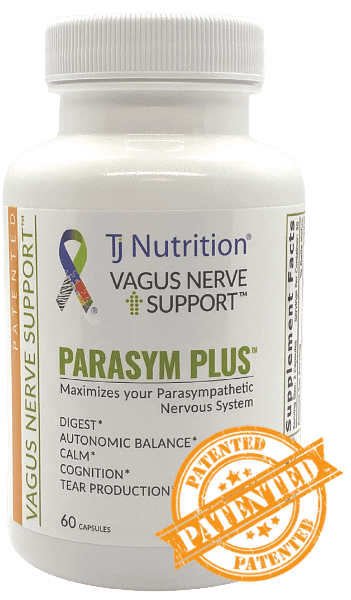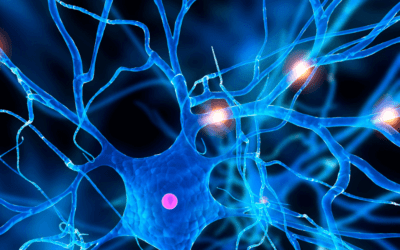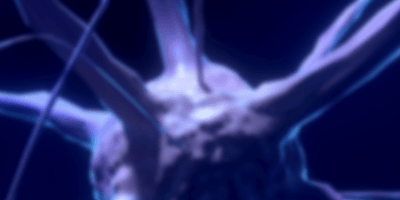One mechanism behind exercise is the reduction of inflammation when performed regularly. Clinical studies show that consistent exercise actually reduces some inflammatory cytokines and can promote health for this reason. Little or no exercise promotes increased inflammation – but interestingly, high levels of exercise can also promote high levels of inflammation. The “sweet spot” is moderate exercise.
Not all inflammation is bad, of course! It is necessary for maximal healing in acute injuries, such as getting a bad splinter. Inflammatory cells come to the area and release chemicals that break down some tissue to allow healing elements to permeate the area. Cells such as neutrophils are one of the first the arrive. They release chemicals (such as histamine, elastase, and collagenase), cytokines, and chemokines (special proteins such as TNF-alpha, IL-6, and IL1-beta) that further increase inflammation and draw in other inflammatory cells such as macrophages (causing an “inflammatory cascade”). Histamine and other chemicals cause the vessels to dilate (the area gets red and hot) and to leak (the area swells). When healing is complete, the body begins to reign in the inflammation, the swelling and pain are reduced and the tissue returns to normal.
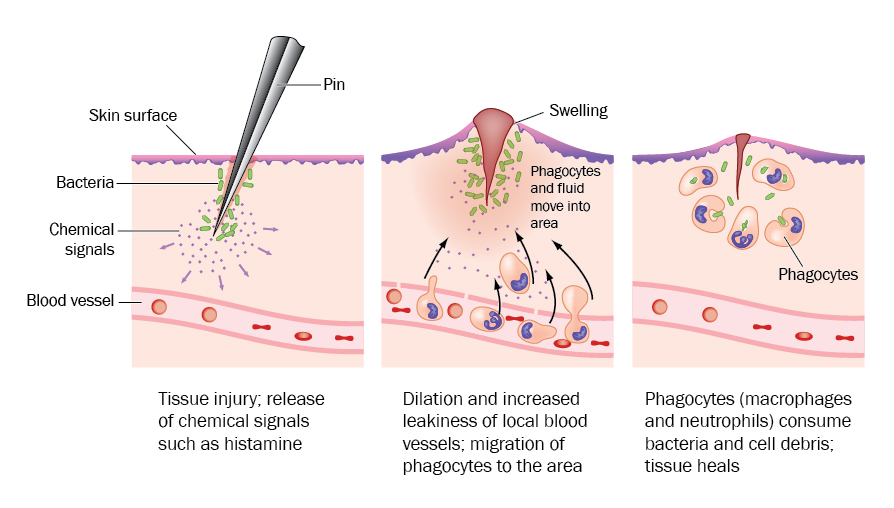
Interestingly, weightlifters depend upon some inflammation to break down muscle when they lift. Then they take a break to allow the regrowth of the muscle, and it comes in stronger and larger! This inflammatory response is a necessary step to promote stronger, bulkier muscles. This is why it is important to take a day or two (or three) off after heavy lifting (or to alternate body parts being trained) to allow the inflammation to normalize between sessions. Otherwise, further weight-lifting and inflammation don’t allow this normal recovery and can ultimately result in damage to the muscle, and importantly, the inflammation can begin to cause problems systemically (throughout the body). Acute inflammation (from intense exercise) allows strengthening, but chronic inflammation is damaging.
Triathletes, endurance runners, and extreme sports participants can do enough damage that they are inflamed systemically (throughout their bodies, not just in the muscles) and studies show that some inflammatory chemicals can persist for 19 days! This means that low-grade systemic inflammation persists, possibly reflecting incomplete muscle recovery. This form of exercise doesn’t allow for the rest period needed for recovery, but instead, triathletes must power through despite the pain, which is why this intense form of exercise is not only a physical exercise – it is a mental exercise of toughness.

So, what can athletes do to help prevent systemic inflammation, and importantly, who may be at higher risk of chronic inflammation that can damage the body, reduce performance, and ultimately, make you feel sick? To understand this, first, we have to look at how the body normally controls inflammation.
Dr. Kevin Tracy of the Feinstein Institute of Medicine discovered that the vagus nerve is the anti-inflammatory nerve of the body. The vagus nerve helps control inflammatory cells and the release of inflammatory cytokines when inflammation is no longer needed. The vagus nerve, which is the longest cranial nerve of the body, is a parasympathetic nerve – it controls the “rest and digest” system of the body. An essential part of the autonomic nervous system, it controls heart rate, blood pressure, every aspect of digestion, and breathing. So how does the vagus nerve help control inflammatory cells and the release of cytokines? Let’s look at macrophages to see how this is accomplished.
Macrophages are important for us to kill germs, to help clean up debris, and to promote necessary inflammation. These cells are our friends and are necessary to maintain health – but they must be controlled. They must be told when to stop releasing inflammatory cytokines! They receive this signal from the vagus nerve. This is how it works:
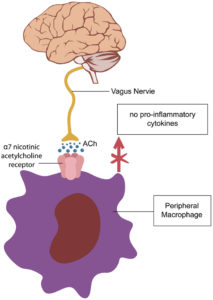
There is a site on the macrophage – called the alpha-7 nicotinic acetylcholine receptor that prevents the release of an excess of inflammatory cytokines in a normal, healthy patient – but NOT if the vagus nerve is not working well! The acetylcholine released by the vagus nerve lands on this receptor and instructs the cell to stop releasing inflammatory cytokines so that inflammation can stop when it is no longer needed. If the vagus nerve is not working well for any reason, chronic inflammation results. This chronic inflammation is damaging to tissue and organs and can make the host feel sick. When you get the flu, for example, and feel horrible and need to curl up in bed, you can thank inflammatory cytokines for that! Chronic inflammation can make us feel tired, cranky, and can reduce athletic performance.

What can cause the vagus nerve to perform poorly, resulting in chronic inflammation working against athletic goals? A few things!
First, damage to the vagus nerve can occur. The vagus nerve is quite long – it is the longest cranial nerve in the body! It goes from the brain, down the neck, into the chest cavity, then continues to snake through the abdominal cavity. If it becomes damaged for any reason, it doesn’t work well. Trauma such as abdominal or chest surgery, heart ablation, gastric surgeries such as gastric sleeve, neck injuries, heart ablation, and others can damage this nerve.
Secondly, because this nerve uses acetylcholine as its neurotransmitter (it communicates with organs via this chemical), any genetic disorder involving the manufacturing of acetylcholine can cause poor vagus nerve function.
Finally, and importantly, some inflammatory cytokines block the release of acetylcholine! Cytokines such as IL-1beta and IL-6 and inflammatory cells such as lymphocytes block the release of acetylcholine. This means that the nerve can be artificially stimulated, but nothing much happens! The very inflammation that occurs from some extreme exercises can cause the vagus nerve to lose control over the inflammation. It is ironic, and an important cycle to break if you want to be as healthy as you can.
How can we support vagus nerve function if the vagus nerve is not working well?
If the vagus nerve is damaged for any reason, there is a second opportunity to make it work well! Often forgotten, the vagus nerve is actually in two pieces – the long “preganglionic portion” which goes from the brain down to the organ, and then there is a gap (or “synapse”) and then there is a tiny “postganglionic” vagus nerve, another gap and ultimately the receptor on the organ. The preganglionic nerve is the one that is often damaged because it is so long (“vagus” means “wanderer”). If this nerve is damaged, the postganglionic vagus nerve is still an opportunity, as is the receptor itself.
This new discovery was recently patented and is critical for many athletes to maximize their performance as well as their health. When the vagus nerve doesn’t work well, chronic inflammation can become a problem, digestion is reduced, constipation can occur, heart rate can increase, heart rate variability can be reduced, and absorption of nutrients declines.
Be your best self. Support your vagus nerve.
Dr. Diana Driscoll has received two patents to date concerning this new approach to support the vagus nerve and the parasympathetic nervous system.
References
Wang, Hong, et al. “Nicotinic acetylcholine receptor α7 subunit is an essential regulator of inflammation.” Nature 421.6921 (2003): 384. [PubMed]
Kawanishi, Noriaki, et al. “Neutrophil Depletion Attenuates Muscle Injury after Exhaustive Exercise.” Medicine and science in sports and exercise 48.10 (2016): 1917-1924. [Full Article]
Neubauer, Oliver, Daniel König, and Karl-Heinz Wagner. “Recovery after an Ironman triathlon: sustained inflammatory responses and muscular stress.” European journal of applied physiology 104.3 (2008): 417-426. [PubMed]
Gomez-Merino, Danielle, et al. “Comparison of systemic cytokine responses after a long-distance triathlon and a 100-km run: relationship to metabolic and inflammatory processes.” European cytokine network 17.2 (2006): 117-124. [Full Article]
Nieman, David C., et al. “Muscle damage is linked to cytokine changes following a 160-km race.” Brain, behavior, and immunity 19.5 (2005): 398-403. [PubMed]
Pinho, Ricardo A., et al. “Oxidative stress and inflammatory parameters after an Ironman race.” Clinical Journal of Sport Medicine 20.4 (2010): 306-311. [PubMed]
Pavlov, Valentin A., and Kevin J. Tracey. “The cholinergic anti-inflammatory pathway.” Brain, behavior, and immunity 19.6 (2005): 493-499. [Full Article]
Suzuki, Katsuhiko. “Cytokine response to exercise and its modulation.” Antioxidants 7.1 (2018): 17. [Full Article]
Walton, R. Grace, et al. “Human skeletal muscle macrophages increase following cycle training and are associated with adaptations that may facilitate growth.” Scientific Reports 9.1 (2019): 969. [Full Article]
Bonaz, Bruno, Valérie Sinniger, and Sonia Pellissier. “Anti‐inflammatory properties of the vagus nerve: potential therapeutic implications of vagus nerve stimulation.” The Journal of physiology 594.20 (2016): 5781-5790. [Full Article]
Lilja, Mats, et al. “High doses of anti‐inflammatory drugs compromise muscle strength and hypertrophic adaptations to resistance training in young adults.” Acta Physiologica 222.2 (2018): e12948. [PubMed]
Main, Cheryl, Patricia Blennerhassett, and Stephen M. Collins. “Human recombinant interleukin 1β suppresses acetylcholine release from rat myenteric plexus.” Gastroenterology 104.6 (1993): 1648-1654. [Full Article]
Kelles, A., J. Janssens, and Jan Tack. “IL‐1β and IL‐6 excite neurones and suppress cholinergic neurotransmission in the myenteric plexus of the guinea pig.” Neurogastroenterology & Motility 12.6 (2000): 531-538. [PubMed]
Komegae, Evilin Naname, et al. “Vagal afferent activation suppresses systemic inflammation via the splanchnic anti-inflammatory pathway.” Brain, behavior, and immunity 73 (2018): 441-449. [PubMed]
Vina, Jose, et al. “Exercise acts as a drug; the pharmacological benefits of exercise.” British journal of pharmacology 167.1 (2012): 1-12. [Full Article]








